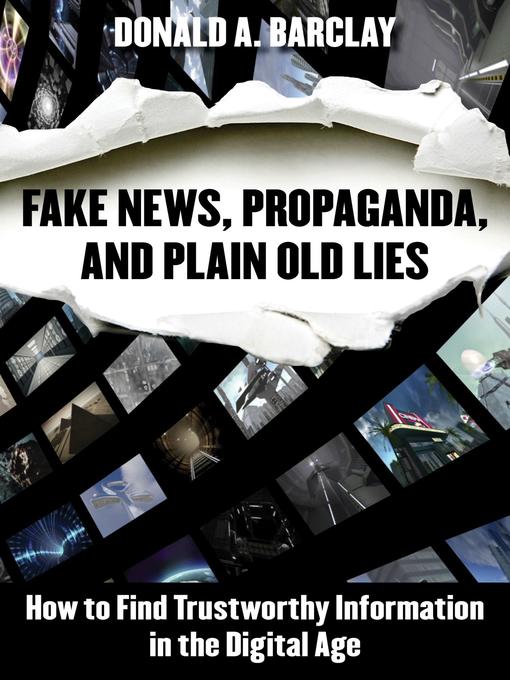Fake News, Propaganda, and Plain Old Lies
How to Find Trustworthy Information in the Digital Age
1 of 1 copy available
1 of 1 copy available
Fake News, Propaganda, and Plain Old Lies will show you how to identify deceptive information as well as how to seek out the most trustworthy information in order to inform decision making in your personal, academic, professional, and civic lives.
• Learn how to identify the alarm bells that signal untrustworthy information.
• Understand how to tell when statistics can be trusted and when they are being used to deceive.
• Inoculate yourself against the logical fallacies that can mislead even the brightest among us.
Donald A. Barclay, a career librarian who has spent decades teaching university students to become information literate scholars and citizens, takes an objective, non-partisan approach to the complex and nuanced topic of sorting deceptive information from trustworthy information.
-
Creators
-
Publisher
-
Release date
June 1, 2018 -
Formats
-
Kindle Book
-
OverDrive Read
- ISBN: 9781538108901
- File size: 7450 KB
-
EPUB ebook
- ISBN: 9781538108901
- File size: 7453 KB
-
-
Languages
- English
-
Reviews

Loading
Formats
- Kindle Book
- OverDrive Read
- EPUB ebook
subjects
Languages
- English
Loading
Why is availability limited?
×Availability can change throughout the month based on the library's budget. You can still place a hold on the title, and your hold will be automatically filled as soon as the title is available again.
The Kindle Book format for this title is not supported on:
×Read-along ebook
×The OverDrive Read format of this ebook has professional narration that plays while you read in your browser. Learn more here.
